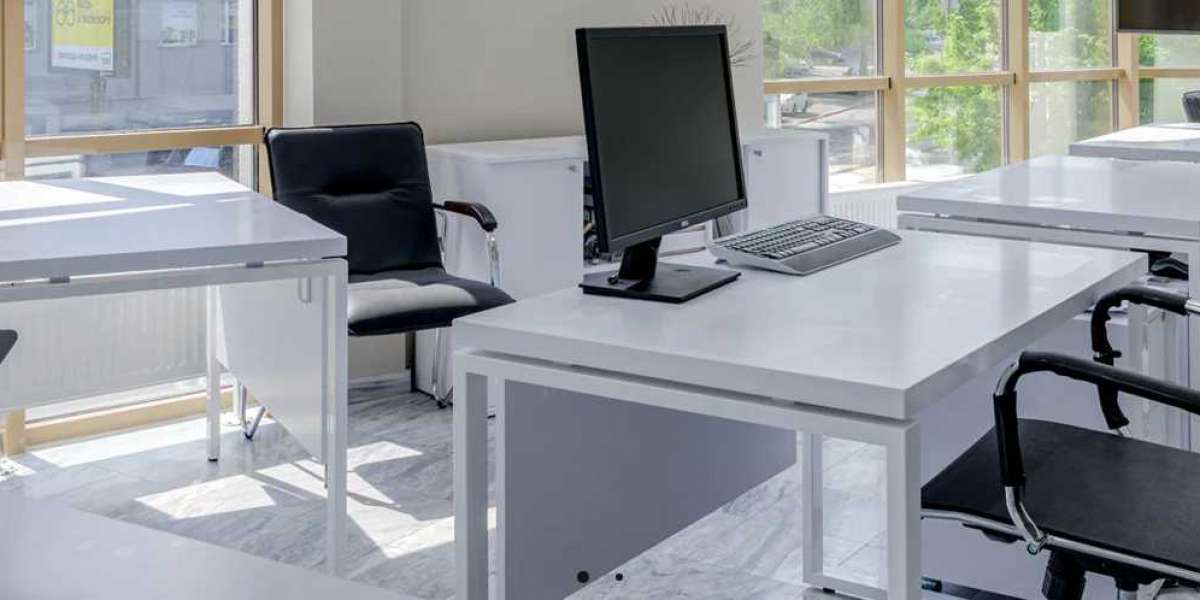Lighting plays a crucial role in office environments, influencing both productivity and well-being. Proper lighting not only affects the functionality of the workspace but also impacts employee health, mood, and performance. Here’s a detailed look at how lighting affects office productivity and well-being, and strategies for optimizing lighting in the workplace.
1. Impact on Productivity
a. Enhanced Focus and Concentration
- Adequate Illumination: Proper lighting helps reduce eye strain and fatigue, which enhances focus and concentration. Well-lit workspaces allow employees to perform tasks more efficiently and accurately.
- Task Lighting: Task-specific lighting, such as desk lamps, provides direct light where it’s needed most, improving visibility and reducing the need to squint or strain.
b. Reduced Errors and Accidents
- Clear Visibility: Good lighting improves visibility and reduces shadows, which can help prevent mistakes and accidents. Properly illuminated work areas contribute to a safer and more accurate work environment.
c. Improved Cognitive Function
- Bright Light: Exposure to bright, natural light has been shown to improve cognitive function, memory, and learning capabilities. It can boost mental alertness and overall cognitive performance.
2. Effect on Well-Being
a. Mood and Emotional Health
- Natural Light: Exposure to natural light has positive effects on mood and emotional well-being. It helps regulate circadian rhythms, which can reduce symptoms of Seasonal Affective Disorder (SAD) and improve overall mood.
- Color Temperature: Light color temperature, such as warm or cool tones, can influence mood. Cooler light temperatures are often associated with increased alertness and productivity, while warmer tones create a more relaxing atmosphere.
b. Reducing Stress and Fatigue
- Glare Reduction: Proper lighting design helps minimize glare and harsh contrasts, reducing eye strain and fatigue. A well-lit environment contributes to a more comfortable and less stressful workspace.
- Lighting Conditions: Adjustable lighting conditions allow employees to tailor lighting to their preferences, helping to alleviate discomfort and stress related to lighting issues.
c. Better Sleep Quality
- Circadian Rhythms: Exposure to natural light during the day and reduced artificial light in the evening supports healthy circadian rhythms, which can improve sleep quality and overall health.
3. Strategies for Optimizing Office Lighting
a. Maximize Natural Light
- Window Placement: Position workstations near windows to take advantage of natural light. Use sheer curtains or blinds to control glare while still allowing light to enter.
- Daylight Harvesting: Implement daylight harvesting systems that adjust artificial lighting based on the amount of natural light available, maintaining consistent illumination throughout the day.
b. Use Adjustable Lighting
- Task Lighting: Provide task lighting at individual workstations to allow employees to adjust light levels for specific tasks.
- Dimmable Lights: Install dimmable lights or lighting controls to enable adjustments based on individual preferences and task requirements.
c. Implement Proper Lighting Design
- Layered Lighting: Use a combination of ambient, task, and accent lighting to create a well-balanced lighting scheme that addresses different needs and activities.
- Color Temperature: Choose appropriate color temperatures for different areas of the office. For example, cooler light temperatures (4000K-5000K) work well in work areas, while warmer light temperatures (2700K-3000K) are suitable for relaxation areas.
d. Avoid Common Lighting Issues
- Glare Control: Use anti-glare screens or filters to reduce glare from computer monitors and overhead lights.
- Uniform Illumination: Ensure uniform lighting distribution to avoid harsh shadows and uneven illumination across the workspace.
4. Technology and Innovations
a. Smart Lighting Systems
- Automated Controls: Use smart lighting systems that automatically adjust brightness and color temperature based on time of day, occupancy, or ambient light levels.
- Personalized Settings: Implement personalized lighting settings that allow employees to control their own workspace lighting preferences.
b. Human-Centric Lighting
- Dynamic Lighting: Incorporate dynamic lighting solutions that mimic natural light patterns, adjusting throughout the day to support circadian rhythms and enhance well-being.
- Bioadaptive Lighting: Utilize bioadaptive lighting systems that respond to biological needs, such as enhancing alertness in the morning and promoting relaxation in the evening.
Conclusion
Lighting plays a pivotal role in office productivity and well-being. By optimizing lighting through the use of natural light, adjustable fixtures, and innovative technologies, you can enhance employee focus, reduce stress, and improve overall mood and health. Implementing effective lighting strategies creates a more productive and comfortable work environment, leading to increased satisfaction and performance.







